Exhibitions and Fairs
George Rouy, ‘Maelstrom’ at Peres Projects
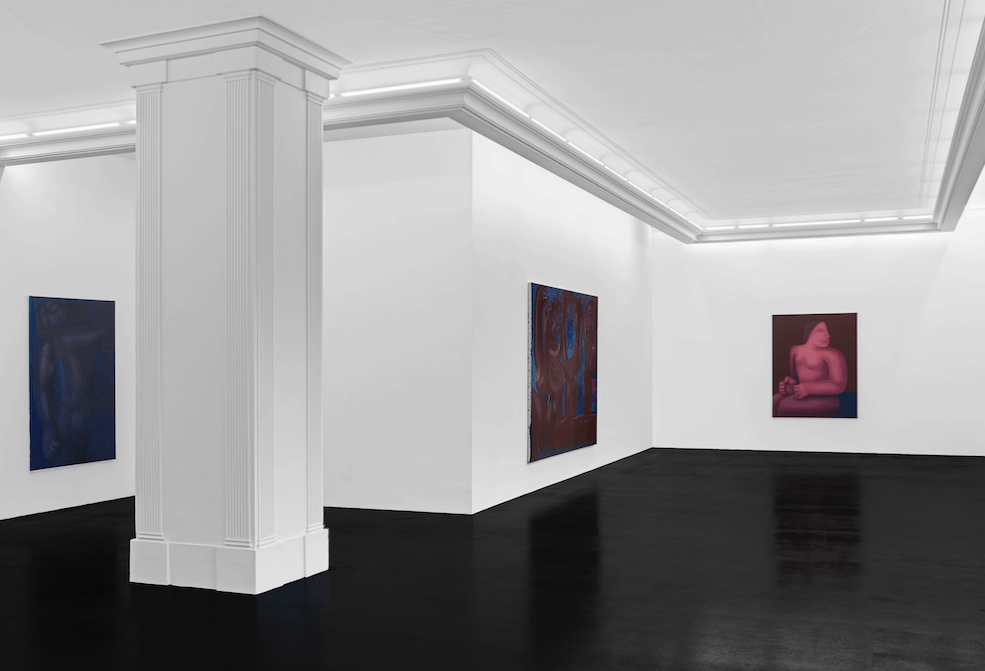
By Shira Wolfe
“The works that make up George Rouy’s Maelstrom behave visually as the word does verbally and in meaning; with dynamism, force, and unease – resonating as the world does now.” – Peres Projects
Maelstrom
A maelstrom is a powerful whirlpool in the sea or in a river, and also connotes a situation or state of confused movement or violent turmoil. As it happens it also the title of painter George Rouy’s current solo outing at Berlin’s Peres Projects, a show consisting of works that in the words of the gallery “behave visually as the word does verbally and in meaning; with dynamism, force, and unease – resonating as the world does now.”

Modernist and Medieval Influences
Rouy cites modernist artists like Picasso and Matisse, as well as Medieval artists such as Jean Fouquet and Rogier van der Weyden as inspirations. These influences are evident in Keeping It for Myself (2019). There’s a hint of Gauguin’s Tahiti portraits here as well. A figure with smooth, bulky body parts sits naked in front of the viewer, albeit much more amorphous and gender-fluid than Gauguin’s portraits. Powerful yet sensitive, largely asexual yet with a forceful physicality, Rouy’s figures are a welter of ambiguity and contradictions. As the gallery puts it, “these images couldn’t exist in any other time, place or context than our own.”
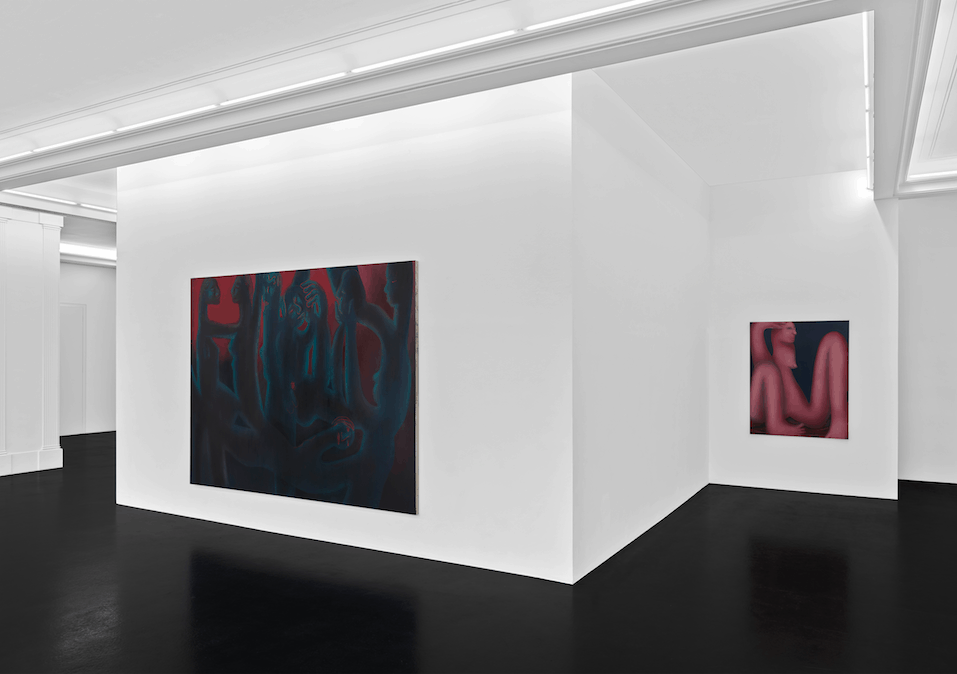
“To be a figurative painter it was like ‘What are you doing?’ It had no relevance.” – George Rouy
Figures Contorting and Glowing
The flesh of Rouy’s bodies glow – the grounds of the works in this series are all painted in deep warm hues of terracotta, brown, blue and green; earthy tones with more than a hint of otherworldliness. Against the richness of these grounds are set his figures, modelled with a smooth satin sheen in the same or similar shades, and illuminated by an indeterminate source as they either pose totemically in pseudo-classical stances, or move within the throes of seemingly arcane rituals.
Rouy is known for his contorting figures, sometimes inspired by people dancing in clubs, or by the primal fighting instinct of a more feral state. They’re bold, at times awkward, but mostly free to be as they are. Rouy outlines elements of his figures with red or blue – the eyes, the hair, the lips, the genitals, the nose, the fingers, toes or breasts. In other pieces, he sticks to brushstrokes so smooth the paintings seem almost airbrushed, with the figures delineated from their background due to his accomplished chiaroscuro.
Some elements recur in his paintings, like the tilted heads, which he’s referred to in the past as a reference to his frustration, submission and vulnerability when faced with the unknown.
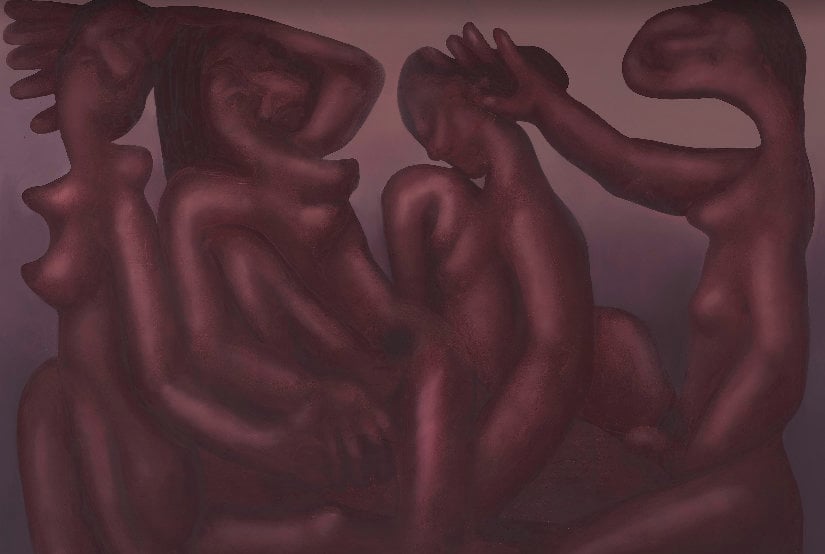

Scenes of Love, Desire and Guilt
In the large blue-and-brown work Scenes of Love, Desire and Guilt (2019), figures are sprawled, embracing, kissing, genitals exposed, and seem to melt together in a contortion of limbs of unclear ownership. Rouy aims for his faces to have as little expression as possible so the viewer has the freedom to interpret the mood of the painting. And the mood here is tricky. There’s warmth and loving but also frustration and disconnection, for example in the writhing figure on the left turned away from the others. Rouy offers us the full gamut of the human emotional experience, often in a single painting, with his figures functioning as everyman repositories for the various states they depict or represent.
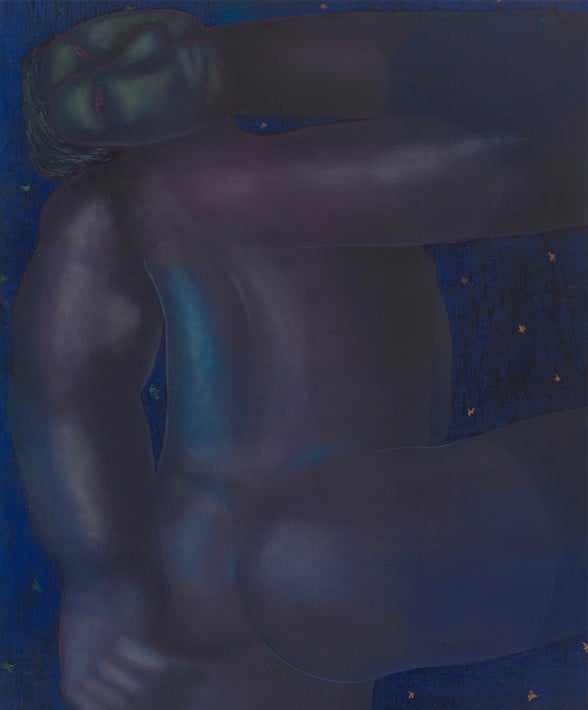
His solo figures, like in My Secret Life (2019) and Rising in All Its Glory (2019), are totally exposed, but they’re anything but vulnerable. Through the dynamic and forceful poses they strike, there is a sense that they represent those primal impulses Rouy has spoken about in dancers and fighters.

Falling in Love With Figuration
In a 2019 interview with Sleek Magazine, Rouy reflects on his struggles coming to terms with figurative painting. In art school, he was even against it, thinking there was no place for this: “To be a figurative painter it was like ‘What are you doing?’ It had no relevance.” But after he graduated, he fell in love with figuration again, believing in the huge relevance figurative painting could have in a time when identity politics are at the forefront of social and political agendas.
George Rouy – Maelstrom runs through 14 February 2020 at Peres Projects in Berlin.
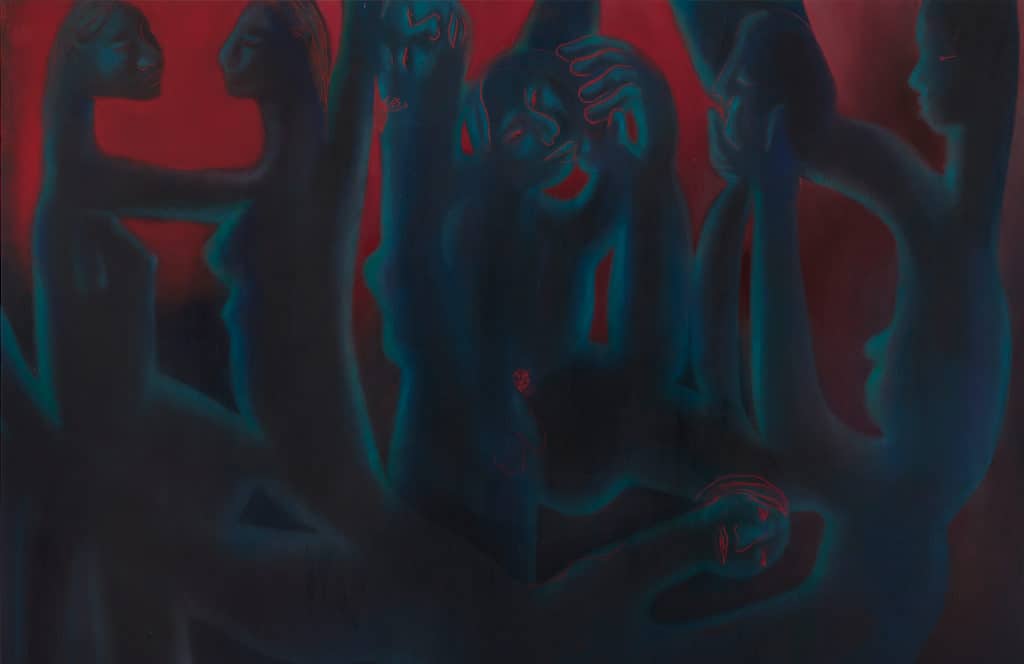
Relevant sources to learn more
For more about George Rouy’s art, check: